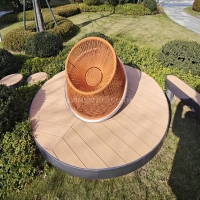Welcome to the website for landscape facilities products and knowledge.
How do smart trash cans with sensors or compactors compare to traditional landscape round trash cans?
In the evolving world of waste management, smart trash cans equipped with sensors or compactors are gaining popularity, but how do they compare to traditional landscape round trash cans? Let’s explore the key differences.
1. Technology and Convenience
Smart trash cans feature advanced technologies like motion sensors, automatic lids, and compactors that reduce waste volume. These features enhance hygiene by minimizing contact and improve efficiency. Traditional round trash cans, while sturdy, lack automation and require manual handling.
2. Capacity and Space Efficiency
Smart trash cans with compactors can hold more waste by compressing it, reducing the frequency of emptying. Traditional bins, though spacious, fill up quickly and need regular maintenance, especially in high-traffic areas.
3. Environmental Impact
Smart bins often promote recycling with separate compartments and energy-efficient designs. Traditional bins are simpler but may contribute to higher waste volumes due to lack of compaction or sorting features.
4. Cost and Maintenance
Smart trash cans are more expensive upfront but may save costs long-term through reduced waste collection frequency. Traditional bins are affordable but incur higher maintenance costs over time.
5. Aesthetics and Durability
Traditional landscape round trash cans blend seamlessly into outdoor environments with classic designs. Smart bins offer a modern look but may require more care to withstand harsh weather conditions.
In conclusion, smart trash cans excel in technology and efficiency, while traditional bins remain a cost-effective, durable choice. The best option depends on specific needs and budget.
Related search:

Recommendation
Swivel chair-Specialty steel structure woven rattan leisure chair with rotatable design